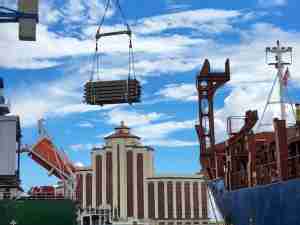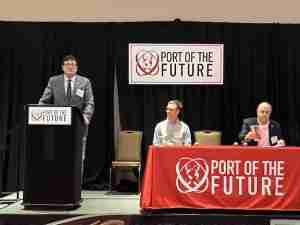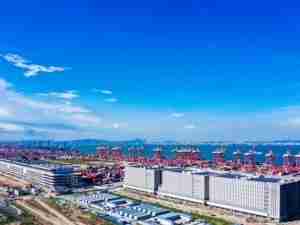The waterway is a vital conduit for refiners on the U.S. Gulf Coast to reach customers in Asia as well as fast-growing markets on the west coast of Central and South America.
Container trade is by far the most profitable for the canal operator. But oil and products tankers also pay some of the highest tolls on the canal under a segmented tariff structure introduced in 2002 and regularly increased since then.
U.S. refineries are set to be some of the main beneficiaries from an increase in the canal's capacity set to be completed in 2014.
Many high-value items will continue to move across the United States in containers by rail to and from the West Coast. But for bulk cargoes such as crude oil and grains, which are less time-sensitive, the canal's expansion could have a bigger impact.
Refined Exports
In the 12 months to Sept. 30, 2012, the canal carried almost 39 million long tons of petroleum and products, the rough equivalent of 288 million barrels of crude or 790,000 barrels per day.
For comparison, the canal carried 54 million tons of container cargo and 37 million tons of grain in fiscal 2012, as well as 15 million tons of metals, 13 million of coal, 12 million of chemicals and 6 million of fertiliser.
The canal primarily serves as a route for the United States to export products rather than import crude. For every barrel that passed across the isthmus of Panama from the Pacific to the Atlantic, six went in the opposite direction in fiscal 2012, according to canal authority statistics ( http://link.reuters.com/gax85t ).
U.S. refineries sent 5.2 million tons of refined products to Asia via the canal (mostly petroleum coke) as well as 7.9 million tons to South America (mostly diesel) and 3.5 million tons to Central America (mostly gasoline).
New Panamax
Since the canal was opened in 1914, capacity has been limited by two sets of locks, one at each end, used to raise ships 85 feet above sea-level so they can cross the Gatun Lake, a flooded valley created by damming the River Chagres. Each chamber is 110 feet wide by 1,000 feet long.
There are also draft restrictions imposed by the water depth in Gatun Lake, which may be reduced in the dry season, as well as height restrictions to ensure vessels fit under the Bridge of the Americas at the Pacific entrance to the canal.
These restrictions limit the maximum size and carrying capacity of vessels using the canal. Panamax vessels, the largest which can use the canal, can be up to 965 feet long, 106 feet wide and draw no more than 39.5 feet below the waterline.
Panamaxes carry up to 75,000 deadweight tons, which is about 5,000 20-foot equivalent units (TEUs) of shipping containers or up to about 500,000 barrels of crude and refined products.
Because of these size restrictions, the canal is closed to supertankers, which carry from 1 million barrels (suezmax) to 2 million barrels (very large crude carriers) or even 4 million barrels (ultra-large crude carriers), as well as to the new generation of container ships carrying up to 15,000 TEUs.
In 2006, Panama approved the construction of an extra set of locks at each end of the canal, as well as dredging operations, that will increase maximum vessel length almost 25 percent (1,200 feet), width by over 50 percent (160.7 feet) and draft by over 25 percent (49.9 feet).
As a result, the canal will be able to handle container ships carrying up to 12,600 TEUs and oil tankers carrying over 1 million barrels.
Construction was more than half finished at the end of 2012. The project is on track to be finished by 2014, in time for the canal's centenary.
Trade Impact
The imminent expansion has prompted a popular parlour game as analysts try to predict how it will effect trade flows - especially on the crucial routes between the U.S.










